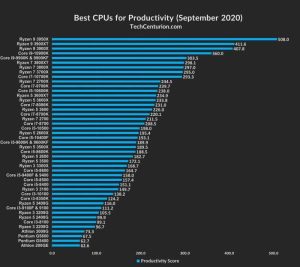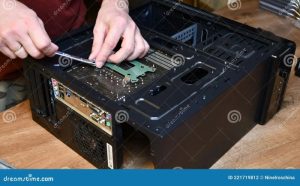
Step into the world of Fiber optic data communication where speed meets efficiency, revolutionizing how we transmit data in ways we never imagined. Get ready to explore the endless possibilities and advantages of this cutting-edge technology that is shaping our digital future.
From the basics to real-world applications, this topic will take you on a journey through the fascinating realm of fiber optic data communication.
Fiber Optic Data Communication

Fiber optic data communication involves the transmission of data through optical fibers, using light pulses to carry information over long distances at high speeds.When compared to traditional copper wire communication, fiber optic data communication offers several advantages. Firstly, fiber optics can transmit data over longer distances without signal degradation, making them ideal for long-distance communication. Additionally, fiber optic cables have a higher bandwidth capacity, allowing for faster data transmission speeds.
They are also immune to electromagnetic interference, ensuring secure and reliable data transmission.
Advantages of Using Fiber Optic Cables for Data Transmission
- Higher bandwidth capacity for faster data transmission
- Immunity to electromagnetic interference
- Ability to transmit data over longer distances without signal degradation
Applications of Fiber Optic Data Communication
- Telecommunications networks for internet, phone, and cable services
- Data centers for high-speed data transfer
- Medical imaging systems for transmitting high-resolution images
Electronics and Electrical
Electronics play a crucial role in fiber optic data communication, as they are responsible for encoding, transmitting, and decoding the information carried by the optical signals. Electrical components are essential for maintaining fiber optic networks, ensuring that the signals are properly amplified, routed, and converted between optical and electrical forms.
Role of Electronics in Fiber Optic Data Communication
Electronics are used in fiber optic communication systems to modulate and demodulate the optical signals, converting them into electrical signals that can be processed by computers and other devices. Optical transmitters, receivers, amplifiers, and switches all rely on electronic components to function effectively.
Importance of Electrical Components in Fiber Optic Networks
Electrical components such as transceivers, repeaters, and multiplexers are essential for maintaining the integrity of fiber optic networks. These components help to boost signal strength, reduce noise, and ensure that data is transmitted accurately over long distances without loss.
Comparison of Different Electrical Systems in Fiber Optic Communication
There are several electrical systems used in conjunction with fiber optic cables, including SONET/SDH, Ethernet, and Fibre Channel. Each system has its own set of protocols and standards for transmitting data over fiber optic networks, with varying speeds and compatibility with different types of equipment.
Application of Electrical Engineering Principles in Fiber Optic Data Communication
Electrical engineering principles such as signal processing, circuit design, and network analysis are applied in the field of fiber optic data communication to optimize the performance and reliability of communication systems. Engineers use their expertise to design and implement electrical components that meet the specific requirements of fiber optic networks.
Computer Repair and Consulting

Repairing fiber optic data communication systems can present unique challenges due to the delicate nature of the components involved. Unlike traditional copper wire systems, fiber optic cables are sensitive to bends, breaks, and contamination, which can severely impact signal transmission. When troubleshooting fiber optic networks, it’s essential to handle the cables with care and precision to avoid further damage.
Challenges in Repairing Fiber Optic Data Communication Systems
- Identifying and locating fiber optic cable breaks or bends can be difficult, requiring specialized equipment and expertise.
- Contamination of fiber optic connectors and cables can lead to signal loss or interference, necessitating thorough cleaning procedures.
- Fiber optic connections can be affected by environmental factors such as temperature fluctuations and moisture, requiring proper insulation and protection.
Tips for Troubleshooting Common Issues with Fiber Optic Networks
- Use an optical power meter to measure signal strength and identify any drops in transmission.
- Inspect and clean fiber optic connectors regularly to prevent contamination and ensure optimal signal quality.
- Test fiber optic cables for continuity and integrity using a visual fault locator to pinpoint any breaks or bends.
The Role of Consulting Services in Optimizing Fiber Optic Data Communication Setups
Consulting services can provide expert guidance on designing, implementing, and maintaining fiber optic networks to ensure maximum efficiency and reliability.
Best Practices for Maintaining and Repairing Fiber Optic Connections Effectively
- Avoid bending or twisting fiber optic cables beyond their recommended bend radius to prevent signal loss or damage.
- Keep fiber optic connectors clean and protected from dust and debris to maintain optimal signal transmission.
- Implement regular inspections and maintenance schedules to identify and address any potential issues before they escalate.
Data Communication
Data communication in fiber optics involves the transmission of data through light signals along optical fibers. This technology is widely used in various industries for its high-speed and reliable data transfer capabilities. Let’s delve into the protocols, transmission process, encryption, and technologies associated with fiber optic data communication.
Protocols Used in Fiber Optic Data Communication
- Transmission Control Protocol (TCP): Ensures reliable and accurate data delivery over the network.
- Internet Protocol (IP): Facilitates the routing of data packets between devices on the network.
- Simple Network Management Protocol (SNMP): Allows for the monitoring and management of network devices.
Transmission and Reception Process
When data is transmitted through fiber optic cables, it is converted into light signals using a transmitter. These signals travel through the optical fibers and reach the receiver at the other end, where they are converted back into electrical signals for processing. This process enables high-speed data transfer over long distances with minimal signal loss.
Importance of Data Encryption
Data encryption plays a crucial role in securing fiber optic communication by encoding data into a format that can only be decoded by authorized recipients. This ensures that sensitive information remains confidential and protected from unauthorized access or interception.
Data Communication Technologies for Fiber Optics
- Asynchronous Transfer Mode (ATM): Enables the efficient transfer of data, voice, and video over fiber optic networks.
- Synchronous Optical Networking (SONET): Provides high-speed, reliable transmission of data over optical fibers for telecommunications networks.
- Ethernet: Widely used for local area network (LAN) connections, offering high-speed data transfer over fiber optic cables.
Computers E-Books
The rise of e-books has transformed the way we consume information, especially through fiber optic networks. Computers play a crucial role in facilitating the seamless distribution of e-books via these high-speed connections.
Optimized E-Book Formats for Fiber Optic Transmission
- E-books are typically formatted in efficient file types like EPUB, PDF, and MOBI to ensure quick and easy transmission over fiber optic networks.
- These formats are designed to minimize file size while maintaining high-quality content, making them ideal for fast data communication.
- Compression techniques are often employed to further optimize e-book files for speedy delivery through fiber optics.
E-Book Platforms Leveraging Fiber Optic Connections
- Platforms like Amazon Kindle, Apple Books, and Google Play Books heavily rely on fiber optic connections for delivering e-books to users worldwide.
- Through these platforms, readers can access a vast library of e-books instantaneously, thanks to the high bandwidth and low latency provided by fiber optics.
- Streaming services like Scribd and Audible also utilize fiber optic networks to provide a seamless reading experience for their subscribers.
Graphics and Multimedia
Fiber optic data communication plays a crucial role in enhancing the quality and delivery of graphics and multimedia content in various industries. The high-speed capabilities of fiber optics have revolutionized the way graphics and multimedia files are transmitted and accessed.
Impact on Quality of Graphics and Multimedia Content
Fiber optic networks significantly improve the quality of graphics and multimedia content by providing faster and more reliable data transmission. This results in high-definition images, videos, and audio being delivered seamlessly without any lag or distortion. The bandwidth capacity of fiber optics ensures that large files can be transferred quickly and efficiently, leading to a superior viewing experience for users.
Enhanced Delivery of Graphics and Multimedia Files
High-speed fiber optic networks enable the swift and smooth delivery of graphics and multimedia files across various platforms. Whether it’s streaming videos, online gaming, virtual reality applications, or video conferencing, fiber optics ensure that the content is delivered in real-time without any buffering or delays. This seamless transmission is essential for industries that rely on the instantaneous sharing of graphics-rich content.
Bandwidth Requirements Comparison
When it comes to transmitting graphics and multimedia data, fiber optics outperform other mediums due to their higher bandwidth capacity. Traditional copper wires or wireless connections may struggle to handle the large file sizes associated with graphics and multimedia content, resulting in slower transfer speeds and reduced quality. Fiber optics, on the other hand, can accommodate the bandwidth requirements of graphics-heavy files, ensuring quick and efficient delivery.
Industries Relying on Fiber Optics for Graphics-Rich Content
Several industries heavily rely on fiber optics for delivering graphics-rich content, including:
Entertainment and media
Streaming services, online gaming platforms, and digital content creators depend on fiber optics to provide high-quality visuals and audio to their audiences.
Design and architecture
Professionals in the design and architecture industry use fiber optics to transfer large graphic files, such as 3D models and renderings, quickly and efficiently.
Education and training
E-learning platforms utilize fiber optics to deliver interactive multimedia content, enhancing the learning experience for students through videos, animations, and virtual simulations.
Computers Hardware
When setting up a fiber optic data communication network, it is essential to understand the hardware components required to ensure reliable and efficient performance. Advancements in computer hardware have greatly improved compatibility with fiber optic systems, offering faster speeds and better reliability compared to traditional copper wire networks. Let’s explore the hardware specifications needed for both types of networks and provide recommendations for selecting the right components for a fiber optic data communication setup.
Hardware Components for Fiber Optic Networks
- Fiber Optic Cables: These cables are made of glass or plastic fibers that transmit data using light signals.
- Optical Transceivers: These devices convert electrical signals into optical signals for transmission over fiber optic cables.
- Switches and Routers: These networking devices are essential for directing data traffic within the fiber optic network.
- Media Converters: These devices help convert signals between fiber optic and copper wire networks for seamless integration.
- Connectors and Adapters: These components ensure proper connections between fiber optic cables and networking devices.
Advancements in Computer Hardware for Fiber Optic Systems
- High-Speed Processors: Modern processors can handle the high data throughput required by fiber optic systems.
- Advanced Network Interface Cards (NICs): NICs designed for fiber optic networks offer improved performance and compatibility.
- Enhanced Data Storage Solutions: Solid-state drives (SSDs) and high-capacity hard drives provide ample storage for data transmitted over fiber optic networks.
Hardware Specifications Comparison
| Component | Traditional Copper Wire Networks | Fiber Optic Networks |
|---|---|---|
| Transmission Speed | Slower speeds compared to fiber optic networks. | Higher speeds for faster data transmission. |
| Signal Quality | Prone to interference and signal loss. | Less susceptible to signal degradation over long distances. |
| Reliability | Less reliable due to signal interruptions and latency issues. | Highly reliable with minimal signal loss and latency. |
Recommendations for Selecting Hardware Components
- Ensure compatibility: Choose hardware components that are specifically designed for fiber optic networks to avoid compatibility issues.
- Consider scalability: Select components that can easily scale up to accommodate future network expansion and increasing data demands.
- Invest in quality: Opt for high-quality hardware components to ensure reliable performance and minimize downtime.
- Consult with experts: Seek advice from professionals or consultants to help you choose the right hardware components for your specific needs.
Last Word
In conclusion, Fiber optic data communication is not just a means of transmitting data; it’s a gateway to a faster, more reliable future. Embracing this technology opens doors to endless opportunities and advancements in the digital world.
Questions Often Asked
How does fiber optic data communication differ from traditional copper wire communication?
Fiber optic communication transmits data using light pulses through glass fibers, offering higher bandwidth and faster speeds compared to copper wires.
What are some common applications where fiber optic data communication is crucial?
Fiber optic data communication is vital in telecommunications, internet connections, medical imaging, and data centers due to its reliability and speed.
Why is data encryption important in securing fiber optic communication?
Data encryption ensures that data transmitted through fiber optic cables remains secure and protected from unauthorized access or interception.




